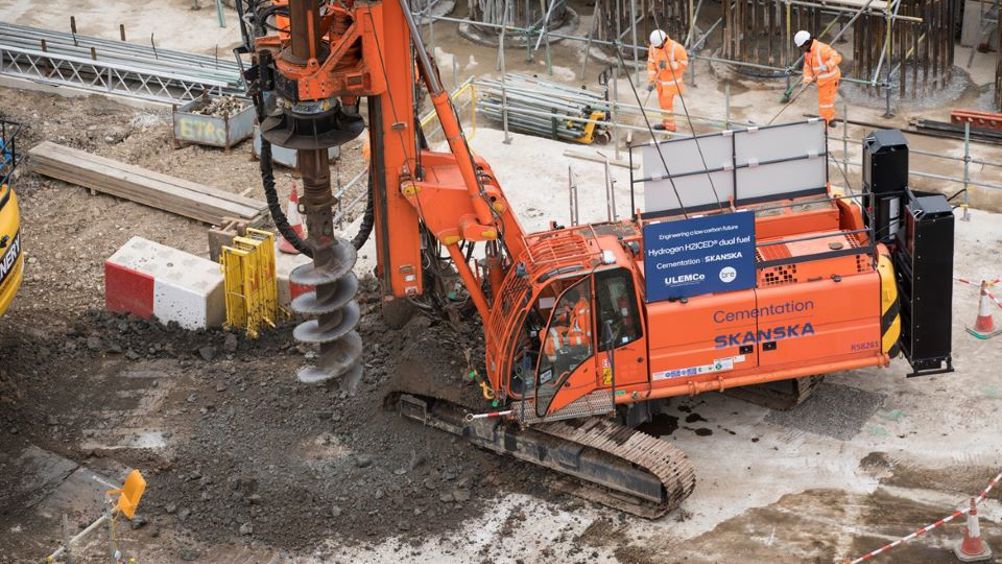Duel-fuel trial could help decarbonise construction sites
HS2 has installed four 30m deep piles on a London site using a hydrogen dual-fuel piling rig developed by ULEMCo in collaboration with Cementation Skanska.

Said to be a world first application of the technology, the demonstration showed that fuel consumption could be cut by over a third.
The rig, modified to operate from on-board hydrogen tanks, achieved an average 36 per cent displacement of diesel by hydrogen, corresponding to the equivalent reduction in fuel consumption and CO2 emissions.
A medium-sized rig (Soilmec SR30 rotary and CFA piling rig) was converted for the trial. These machines can typically use 100 litres of diesel per day of operation, leading to 262 kg CO2 in emissions.
In a statement, Amanda Lyne, managing director of ULEMCo said: “The high energy and duty cycle demands of machines used in construction make hydrogen power a practical proposition over other zero-emission options. This plant typically has a long life, so demonstrating a decarbonisation solution that utilises these existing assets is not only cost-effective but also important for sustainability.”
This real-world test follows trials by ULEMCo and Skanska with Building Research Establishment (BRE) and backed by government funding from Phase 1 of the Red Diesel Replacement programme under the Department for Energy Security and Net Zero (DESNZ).
Register now to continue reading
Thanks for visiting The Engineer. You’ve now reached your monthly limit of news stories. Register for free to unlock unlimited access to all of our news coverage, as well as premium content including opinion, in-depth features and special reports.
Benefits of registering
-
In-depth insights and coverage of key emerging trends
-
Unrestricted access to special reports throughout the year
-
Daily technology news delivered straight to your inbox










Water Sector Talent Exodus Could Cripple The Sector
Maybe if things are essential for the running of a country and we want to pay a fair price we should be running these utilities on a not for profit...